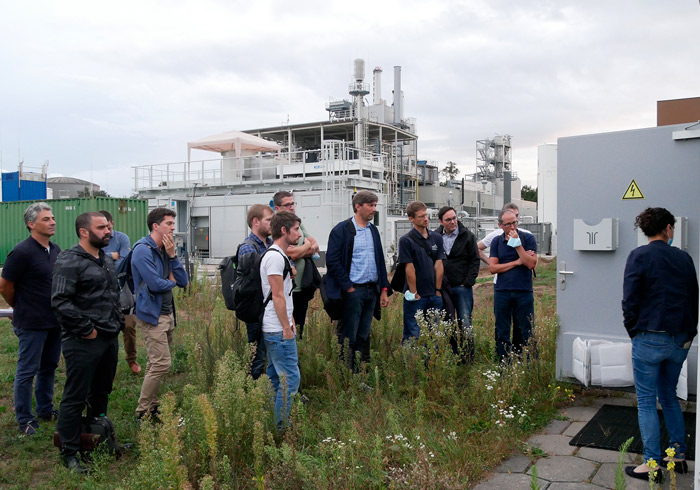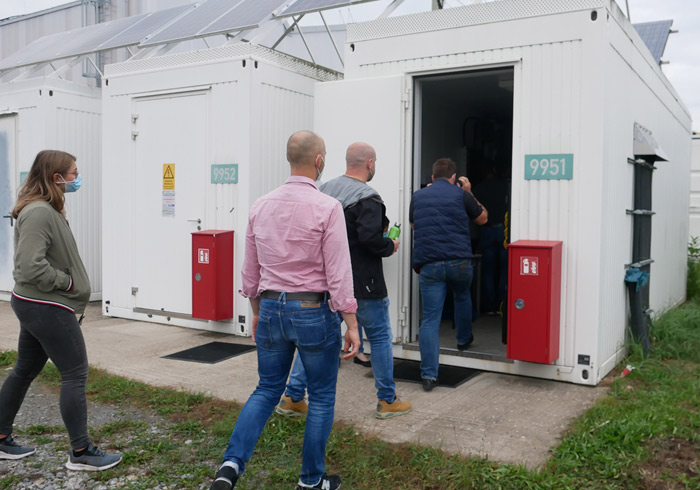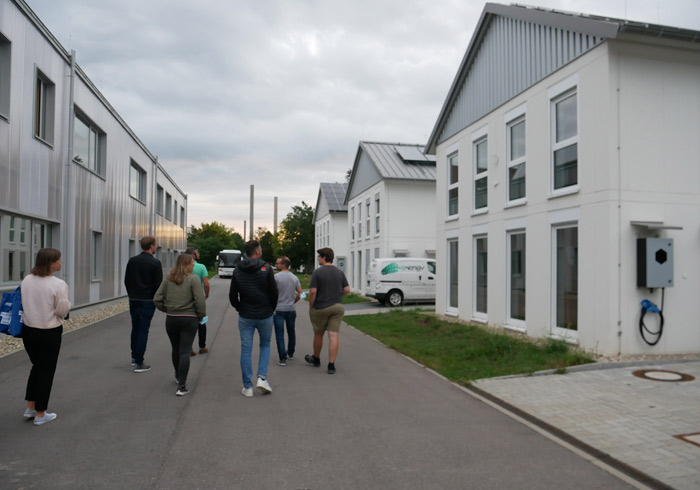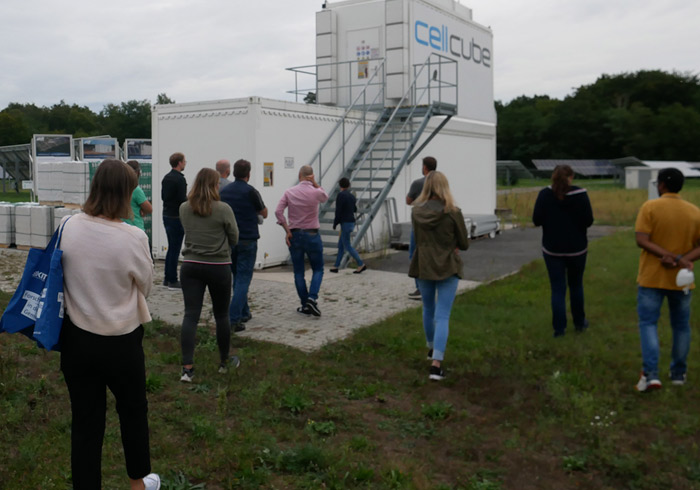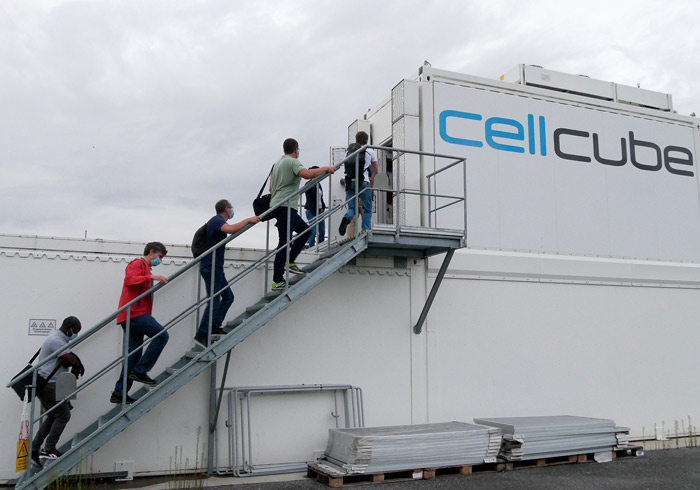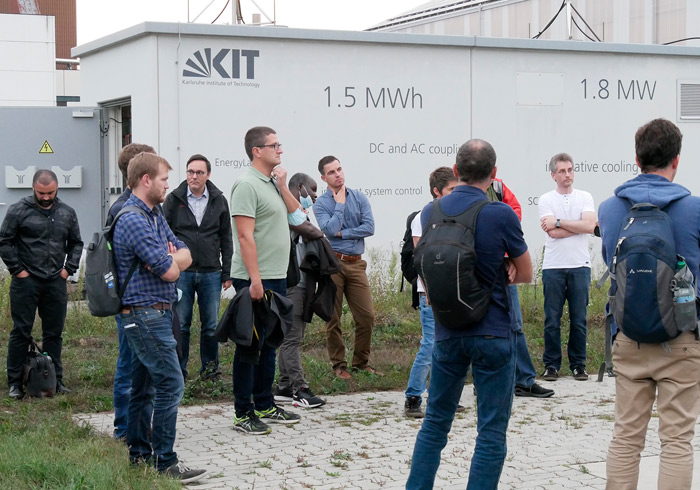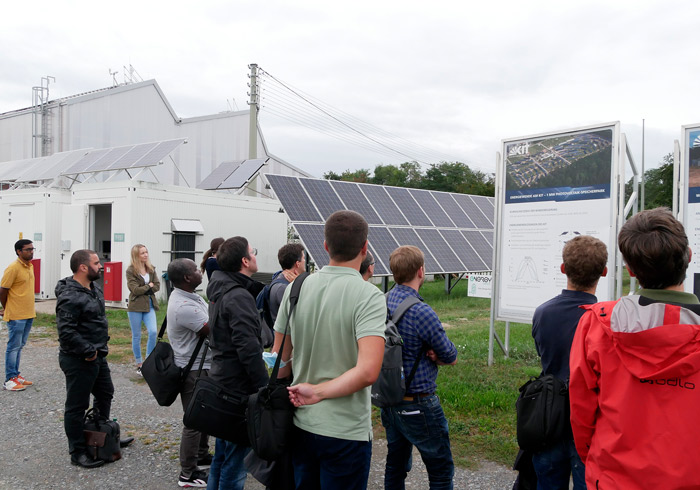Excursion to the Energy Lab 2.0
On September 15th, we visited the Energy Lab 2.0 at the Karlsruhe Institute of Technology (KIT) with the current groups of Rolls-Royce Power Systems further qualification program. The engineers enjoyed a guided tour through the three main areas of the Energy Lab 2.0 and were introduced to the latest in KIT research on (renewable) energy.
Redesigning and testing systems to enable the energy transition
Dr. Michael Kyesswa, Head of Energy Grids Simulation and Analysis Laboratory at KIT, welcomed us to the "brain" of the Energy Lab 2.0, the Smart Energy System Simulation and Control Center (the SEnSSiCC). Here, all information converges; measurement streams are stored, controlled, analyzed, and visualized. Further energy systems are simulated based on these results. The real and virtual energy worlds are linked in this experimental field. Various consumers such as: living labs (three houses, one with a heat pump to heat, one with direct power to heat and one with fuel cells to heat), e-cars, and charging stations can be found at the Energy Lab 2.0. As diverse as the question of the energy transition is, as diverse are the systems in this insular system of the North Campus - which itself can still use the one interface to the main grid for testing purposes.
How to store all that energy?
We continue to explore the question of how to ensure stability in a grid system and how the necessary power required can be replaced by alternative sources in the future. Because energy has to be stored somewhere in order to be made available again without losses when it is needed, Ms. Munzke, Group Manager System Control and Analysis, ETI showed us how this can work in the energy storage field.
Lithium-ion storage offers a multitude of innovations, which can contribute to an increase in economic efficiency and thus to the spread of battery storage devices in various fields of application. It is mostly used for all kinds of portable devices and became state of the art for electro-mobility.
The next stop in the guided tour was the redox-flow battery. Redox-flow batteries (RFB) are very suitable for large stationary energy storage applications based on very good lifetime expectations, good recyclability, safety, and fewer scarce resources are used.
But before anything can be stored, it must first be produced. The most conspicuous and largest part of Energy Lab 2.0 in terms of area is the solar park. In various orientations, inclinations, and configurations, 102 solar tables with 40 modules each are located there.
Due to the fact, that Ms. Munzke covers the stationary energy storage as well as its dimensioning and the simulation of stationary energy storage in her research, an eager exchange was encouraged to discuss the various batteries and their role in the future.
Many thanks to the informative Energy Lab 2.0 colleagues and the interested Rolls-Royce Solution Systems employees - we have got great insights into the new technologies and are optimistic about the energy transition!


